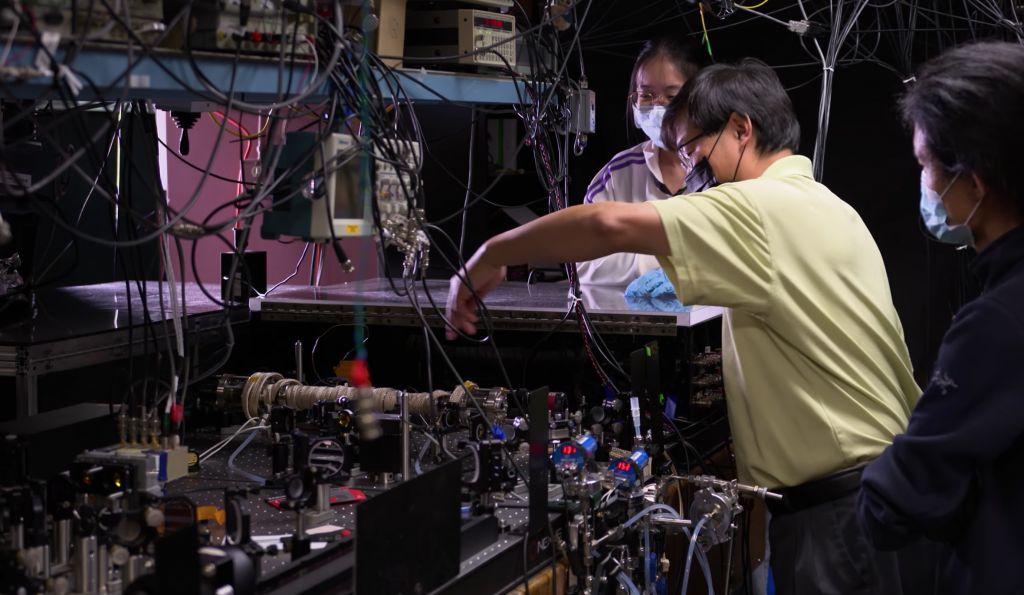
Researchers say the frequency comb breathalyzer developed at CU Boulder could eliminate the need for nasal swabs or saliva tests for covid and other diseases. Pictured is a volunteer providing her breath for study. (Source: NIST)
Non-Invasive Tests with Rapid Results Will Detect Diseases in Exhaled Breath
Scientists from Colorado University in Boulder and the National Institute of Standards and Technology (NIST) have made an important leap forward in the quest to diagnose disease using exhaled breath, reporting that a new laser-based breathalyzer powered by artificial intelligence (AI) can detect COVID-19 in real-time with excellent accuracy.
The results were published April 5 in the Journal of Breath Research. And they had an 85% accuracy in detecting covid in this recent study. That is simply remarkable.
“Our results demonstrate the promise of breath analysis as an alternative, rapid, non-invasive test for COVID-19 and highlight its remarkable potential for diagnosing diverse conditions and disease states.” Qizhong Liang is a Ph.D. candidate in the Joint Institute for Laboratory Astrophysics and the Department of Physics at CU in Boulder.
“There is a real, foreseeable future in which you could go to the doctor and have your breath measured along with your height and weight…Or you could blow into a mouthpiece integrated into your phone and get information about your health in real-time,” said senior author Jun Ye, a JILA fellow and adjoint professor of physics at CU Boulder. “The potential is endless.”
As far back as 2008, Ye’s lab reported that a technique called frequency comb spectroscopy, essentially using laser light to distinguish one molecule from another—could potentially identify biomarkers of disease in human breath.
By measuring the molecules that you provide with your breath, researchers are using AI that can distinguish between those different shadows or absorption patterns, boiling millions of data points down to; in the case of COVID—a simple positive or negative, in a matter of seconds. This sure would have been useful in the last couple of years.

Students work in the lab on the laser-based breathalyzer, which is currently the size of a large table. (Source: NIST video)
Non-Invasive Selling Point
This frequency comb breathalyzer is about the size of a banquet table currently. And it holds lasers, as well as dozens of mirrors and other wiring. But reducing this instrument to a mobile size will allow this science to reach millions more people and do it much more quickly.
Because it only requires your breath, it is completely non-invasive. No more uncomfortable nasal probes to deal with.
The potential of this technology has scientists worldwide very excited. They see a day when they can diagnose serious diseases such as pancreatic cancer by measuring molecules in a breath sample. That would save thousands of lives every year if it proves successful.
What is more, scientists think it’s possible that this technology could be connected to your smartphone. Just by putting your breath into the phone’s receptacle, it may soon be possible to give you a quick diagnosis of several different diseases you might be carrying.
“If you think about dogs, they evolved over thousands of years to smell many different things with remarkable sensitivity,” said Ye. “We are just at the very beginning of training our laser-based nose. The more we teach it, the smarter it will be come.”
Elsewhere, scientists are working to develop a Human Breath Atlas, which maps each molecule in the human exhale and correlates them with health outcomes. Liang hopes to contribute to such efforts with a larger-scale collection of breath samples.
read more at news-medical.net







Leave A Comment